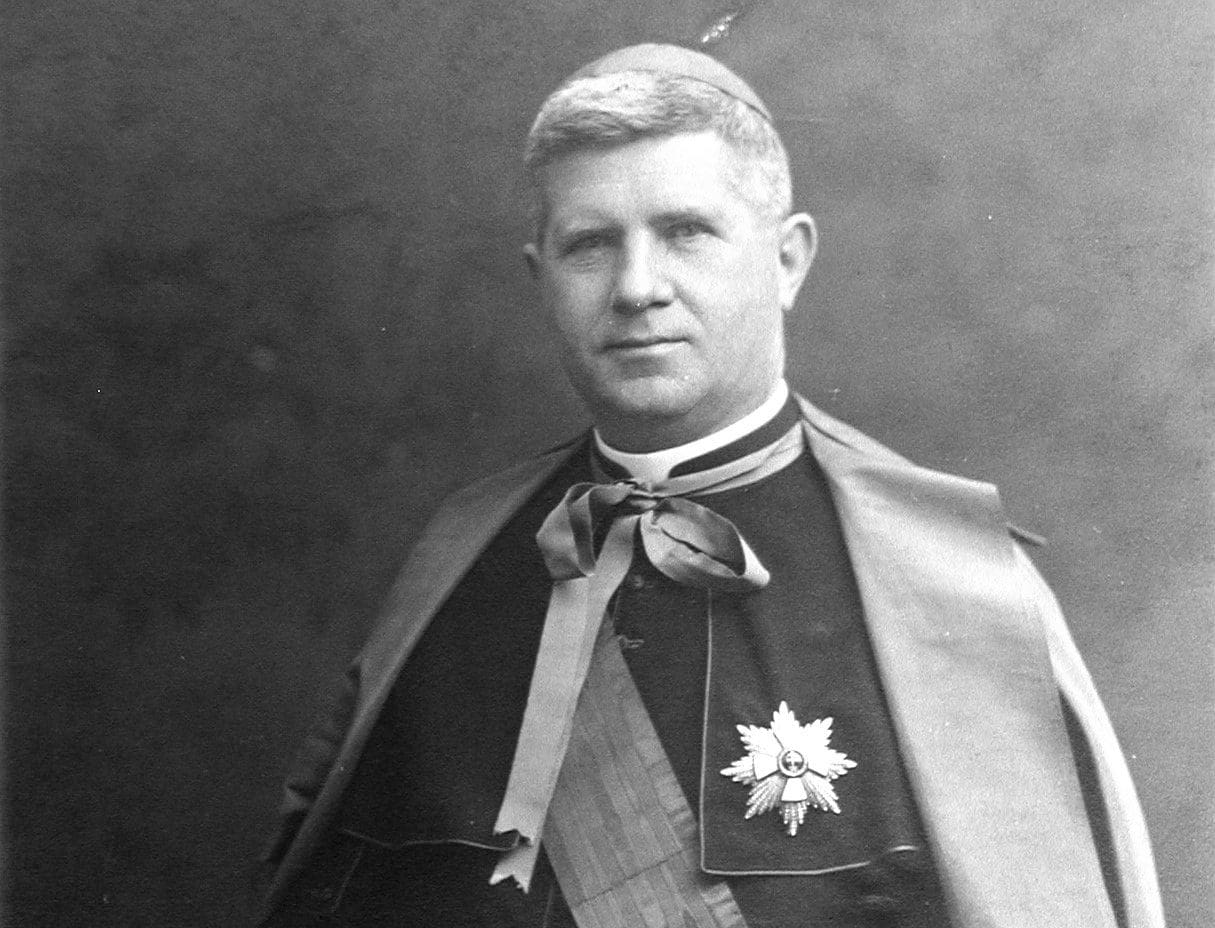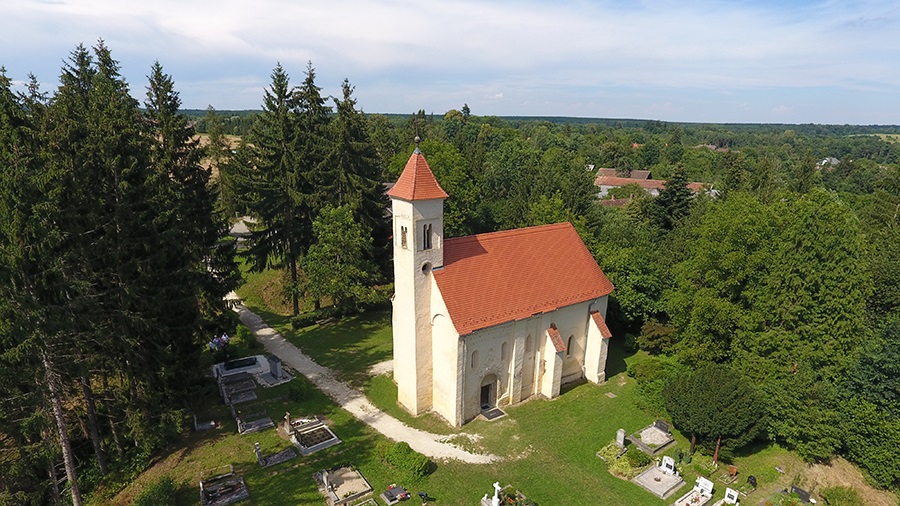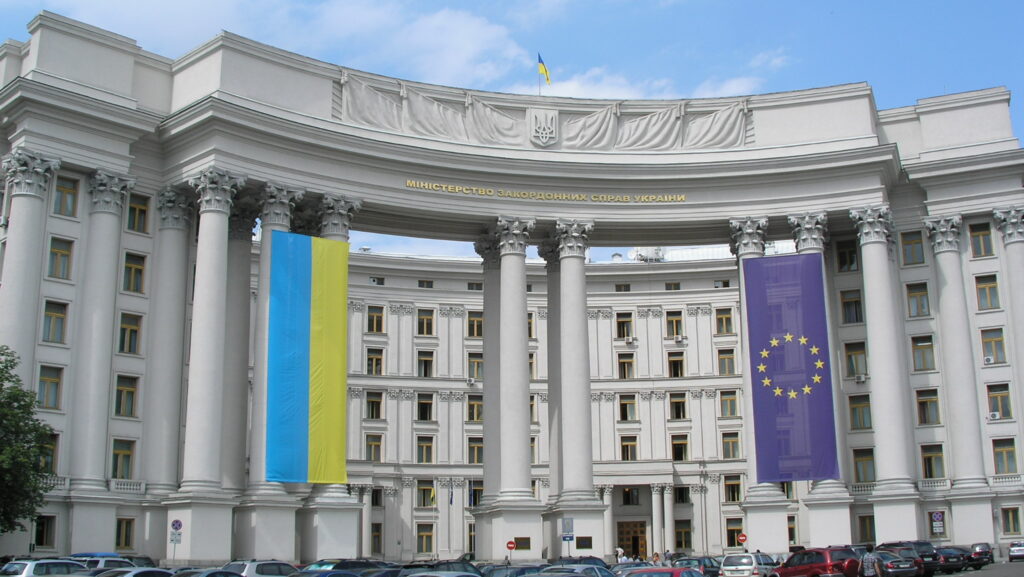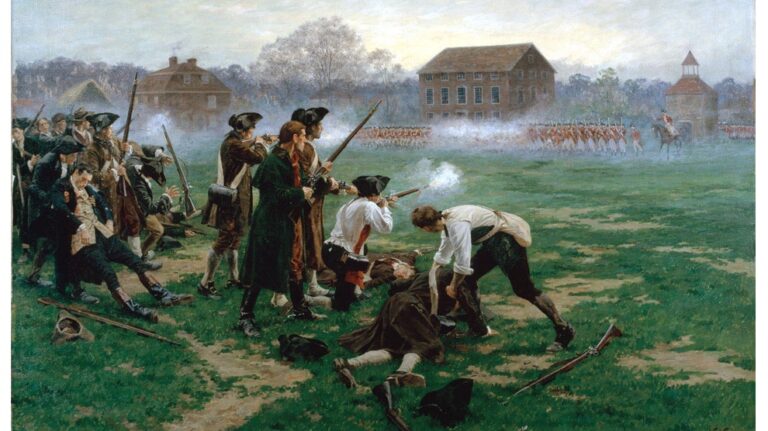Although during the Horthy era the Hungarian state actively supported Christian churches, the support, some claimed, was not distributed equally. The envy over certain state gestures is most vividly exemplified by the case of the Military Archdiocese. With the end of the Austro-Hungarian military clergy system, the idea for the establishment of an independent Hungarian Military Archdiocese arose as early as 1919. Cardinal János Csernoch originally envisaged Count János Mikes, bishop of Szombathely, as the leader of the archdiocese, but the names of Ottokár Prohászka and Béla Bangha SJ also came up. It was then suggested that Admiral Miklós Horthy’s friend, István Zadravecz OFM from Szeged, should fill the position, and the cardinal accepted the proposal. The objections of the Protestants had been foreseen by Zadravecz himself and the Ministry of Defence, so arrangements were made to establish pastoral care in the military for those belonging to various Protestant denominations as well. But for three more years the Protestant denominations failed to agree on whether it should be a Calvinist or Lutheran pastor to lead the Protestant Military Chaplaincy and who it should be. (Finally, in 1923, Elemér Soltész of the Calvinist church was elected). Zadravecz was appointed military bishop in March 1920.
Zadravecz was born in Csáktornya (Čakovec) into a large Catholic family of South Slavic origin. His smallholder father raised eight children, and the talented son joined the Franciscan order at an early age. Zadravecz grew into a loud and passionate orator of contemporary public life, openly embracing territorial revisionism and anti-Protestant affairs. Although he gives the impression of a confrontational man based on a diary he wrote in the late twenties, in reality his image was tainted largely by his later critics, even though some of the criticism was well-deserved.
Although he gives the impression of a confrontational man, in reality his image was tainted largely by his later critics
As head of the Franciscan convent in Szeged and a member of the party of Mihály Károlyi, he supported the October Revolution of 1918 and called Jesus an ‘internationalist’. Local rabbi Immánuel Löw had a good relationship with the friar during the first months of the counter-revolution, but when Zadravecz was questioned about his good relationship with the rabbi in Szeged in 1921, he already denied it.[1]
Zadravecz admitted at one point that he was waiting for the time with ‘mockery’ and ‘glee’ for the time when his political opponents would be ‘finished.’[2] He certainly did not advertise, by contrast, his best qualities, such as having deep discussions about God and faith with Communists, Freemasons and Jews’, who he said went to him ‘in secret’. Zadravecz described these meetings as ‘the secret sources of happiness in my priestly life.’ ‘Into their hearts I placed often and with many tears of happiness the seeds of God’s justice’ – he later wrote.[3]
In his book of prayer and contemplation, he pointed out that in addition to being a militant nationalist bishop, he also had a human, priestly side. Here he noted that he often remembered a verse he had learned in his childhood lessons: ‘Just like your hands are small / To reach the skies, / So is your mind / to comprehend the Lord.’ So much wisdom and depth in a children’s verse’ – he remarked. ‘It speaks of the limits of man and the infinity of God […]. If God is forced upon us, perhaps we see him as an obstacle. Too little of God is not healthy […] but if through learning […] we gain a lot of him […] then I am stunned by his greatness and joy. More, more, more of the Lord, this everlasting hunger for God – this is what takes men from the muddy swamps to the eternal heights.’[4]
In 1921 he was still a regular visitor and loud speaker of the nationalist rallies, and perhaps the only well-known Catholic orator who berated Protestants more than the Jews
However, he wrote this in the early 1930s, when he had already failed as a public figure and had time to meditate on God’s grace. In 1921 he was still a regular visitor and loud speaker of the nationalist rallies, and perhaps the only well-known Catholic orator who berated Protestants more than the Jews. Although he considered himself a man of the poor—and publicly uttered truly socially sensitive messages—some recalled that he had an elitist and petty side, as well as a sweet tooth and a love of cigarettes. Utilizing his connections with the Ministry of Culture, he gained support for a theatre piece about John of Capistrano (György Kapisztrán), the famous Catholic preacher who led the crusade against the invading Ottomans at the siege of Belgrade in 1456, which he wrote himself. His piece was staged in Budapest and in the countryside, even though, as he himself admitted, he did not know much about theatre.[5] But Zadravecz was most well-known not for his theatre work, but for his attacks on the Protestant churches.
One of Zadravecz’s main tasks was to fight against the custom of having representatives of all the Christian churches consecrating the flags of the army. According to a witty anecdote, it happened during consecutive flag consecrations that a Unitarian pastor mentioned the Holy Trinity and a Calvinist mentioned the Virgin Mary. (Unitarian faith is known not to believe in the Trinity, and Calvinists do not worship saints).
In his struggle for “protestant-free” flag consecrations, Zadravecz was not very surprisingly met with serious resistance, and so the remark in his diary ‘I have found Protestants against myself always and everywhere’ is understandable.[6]Protestants were disturbed by the cassock of Catholic military chaplains and wanted to see uniforms with stars on them, which Zadravecz saw as a gross insult. Zadravecz forced the use of flags bearing the image of the Virgin Mary and the inscription Regnum Marianum. The Latin term, meaning “The Kingdom of Mary”, referring to the tradition of King St. Stephen’s offering of Hungary and the Holy Crown to the Virgin Mary before his death, was considered offensive by Protestants. Instead, Lutheran bishop Sándor Raffay suggested the term Regnum Christianum– “Christian kingdom”– stating that ‘In Christ we all meet, while in Mary we are divided.’ [7] In response, Zadravecz raised the argument of revisionism: ‘Regnum Christianum fits in 13 counties,’ he argued, while Regnum Marianum itself is Hungarian integrity.[8] He refused to back down on the use of flags bearing the image of Mary either, declaring in January 1921 that those who did not like the Mary flag ‘were not Hungarian.’[9] According to some memoirs, once when Zadravecz learned that a Protestant pastor was coming to consecrate a flag at an event, he simply went home.[10]
Protestant criticism accompanied Zadravecz’s entire career as a military bishop. The Kálvinista Szemle (Calvinist Review) commented from the outset on the establishment of a Catholic Military Archdiocese as saying that the leadership ‘apparently had no idea of the ideals of 1848, which stated the full equality of established religions.[11] A month later, a Calvinist National Assembly spokesman said the idea of a ‘Catholic army’ was ‘frustrating the souls of hundreds of thousands of Protestants and that ‘even the Austro-Hungarian army had been more tolerant of them.’[12]
The Lutheran press was not idle either: ‘In the military, we hear forever and ever about Masses and the Bishop Zadravecz,’ they wrote in January 1921.[13] Raffay complained in a letter that ‘the Christian system […] has become [a] well-planned movement for recatholization [today]’, calling Zadravecz a ‘medieval-minded individual’.[14] Incidentally, classical liberal editor Jenő Rákosi warned Raffay in a letter not to attack Zadravecz, because the bishop is a man of the government.[15]
Protestant opponents mocked Zadravecz as ‘the Catholic bishop of the Protestant Horthy,’ but the bishop thought that although a Protestant,’ Horthy ‘feels more Catholic in spirit’.[16] His opinion was shared by Bangha, who considered the governor to be a Protestant only by name. Zadravecz didn’t even feel he needed an explanation: in his opinion, Protestants made up only 40 per cent of the army, he argued, and ‘liberal indifference’ was spreading because of them anyway. While in a memorandum addressed to the episcopal faculty in November 1921 he pointed to the ‘horrors of a war of religion,’ he recommended the creation of anti-Protestant Catholic organizations, rather than reconciliation.[17] However, Protestant soldiers did definitely not appreciate the activities of the camp bishop: according to an anecdote, Zadravecz once tried to go into a barracks to make friends with the soldiers, but the guards said they did not know him, and he was not allowed in.[18] The portrait of the bishop was, of course, published in all military publications, so it was more likely that this was the revenge of Protestant soldiers.
In his opinion, Protestants made up only 40 per cent of the army, he argued, and ‘liberal indifference’ was spreading because of them anyway
Zadravecz, later on, turned out to be a priest of great capability, tolerance and bravery – but this was only recognized in the late thirties and early forties. The story of his controversial years however well illustrates the fascinating internal debates and lively public life of the early Horthy period, as well as the divisions between Christian churches in a period which desperately called for Christian unity.
[1] Borsányi György (ed)., Páter Zadravecz titkos naplója, Budapest, Kossuth kiadó, 1967, pp. 239, 241; Budapest Főváros Levéltára (Budapest Metropolitan Archives, hereinafter BFL), VII.5.1950.2344. 155, 267.; Magyar Ferences Levéltár (Hungarian Franciscan Archives), Zadravecz papers, Folder IV. Minutes of the meeting of the Szeged ÉME group, 29th May 1921. 2.
[2] ‘Páter Zadravecz titkos naplója’, pp. 201-202.
[3] BFL, VII.5.1950.2344. 307.
[4] Zadravecz István, Szerafi szárnyakon. Ima- és elmélkedőkönyv, Budapest, Ferences Missziós Szövetség, 1931, pp. 41–44.
[5] See BFL VII.5.1950.2344. 264. (social messages); Zadravecz papers, Folder 10. (elitism); Zadravecz papers, Folder 12. (notes on diet); Gondolat, 1920/6. (cigarettes); Világ, 7th October 1921. (theatre).
[6]‘Páter Zadravecz titkos naplója’, pp. 101-102, p. 82.
[7] Evangélikusok Lapja, 20th December 1920, p. 3.
[8]‘Páter Zadravecz titkos naplója’, p. 35.
[9] As quoted in Kálvinista Szemle, 30th January 1921, pp. 34–35.
[10] Zadravecz papers, Folder 10.
[11] Kálvinista Szemle, April 18th 1920.
[12] Kálvinista Szemle, May 2nd 1920.
[13] Evangélikusok Lapja, 16th January 1921.
[14] ‘Páter Zadravecz titkos naplója’, pp. 60-61.
[15] Evangélikus Országos Levéltár (Lutheran Archives), Raffay papers, Box 5, Rákosi to Raffay, 15th February 1922.
[16] ‘Páter Zadravecz titkos naplója’, pp. 83, 62.
[17] Zadravecz papers, Folder 3. and ‘Páter Zadravecz titkos naplója’, p. 112.
[18] Zadravecz papers, Folder 10.








